After the severe spell at the end of February that lasted into this month there’s lots of excitement / dread (*delete as appropriate) that the synoptic conditions that brought very cold air from our east is about to return.
The latest run on the GFS model shows that very cold air (-10C at 5,000ft) could be over us by next Sunday, with the ECM 12Z operational looking particular cold. 
Snow this late in the year is very rare in the London area though, if the conditions are right, a blizzard is not impossible, as happened during the spring of 1952 when a two-day blizzard at the end of March brought drifts up to 6ft deep in the Chilterns.
Much more likely will be severe, possibly record breaking frosts. The coldest March night since 1959 across the London area occurred on the 3rd in 1965 with -7.4C recorded at Heathrow. Central London fell to -5C on the same night.
A look back at cold spells in March reveals that while snow was very scarce in London and the Home Counties it can be common on high ground from the Peak District northwards.
A history of March cold
1812: Luke Howard in The Climate of London noted that “great inclemency of the weather” on the 21st March disrupted mail deliveries between the north of Scotland and Carlisle. The road between Appleby and Brough was impassable because of snow and between Sheffield and Manchester and Bradford and Halifax the snow had drifted from “two to three yards deep”.
Mail deliveries were also disrupted across South Wales.
In Plymouth a “a most tremendous gale from SW the whole of last night and this morning” brought flooding.
Howard’s account would confirm a classic battleground scenario of mild Atlantic air from the south pushing against cold Polar continental air in the north.
His own records from Stratford show a couple of cold days from the 16th, highs never lower than 2C, the coldest night on the 24th, being -4.4C. On the 20th he mentions snow in the morning followed by rain.
Wanstead mean: 4.9C (-2.8C) rainfall: 74.4mm (183%)
The following accounts of cold spells in March are recorded on the site London Weather.
1962: The first ‘spring’ month was colder than any month during the preceding winter. Frosty nights were much more frequent than normal, and sleet or snow fell on 10 days, although amounts were often trivial . On the 5th, the maximum temperature was only 2.2 C. Towards the end of the month, north to northeast winds were replaced by somewhat, cloudier milder, and moister south-westerlies. Atlantic fronts brought rain bands, and on the 29th nearly 10mm was measured.
Wanstead mean: 3.3C (-4.4C) rainfall: 36.5mm (90%) sun: 95.4hrs (88%)
1964: The first week of March was mostly cold with wintry showers and a fresh northeast wind. The temperature on the 7th only reached 2.3C. The second week was changeable and milder, and the high on the 13th was near 14C., but on the 15th, rain turned to sleet and gave a total of 26mm as cold air slowly encroached from the east. Nearly 15mm of rain fell on the 19th as milder air returned, but the rest of the month stayed mostly rather cold and changeable.
Wanstead mean: 4.9C (-2.8C) rainfall: 80.4mm (90%) sun: 63.5hrs (58%)
1969: The first week was mainly dry, and although dull and cold at first, it became fairly sunny and milder but with severe frosts. Overnight on the 6th/7th the minimum temperature was close to minus 8C. During the second week it became dull and wet, but after a cold start temperatures rose above average. Cold north-easterlies returned on the 16th with a high of only 3C., and cloudy, rather cold, and often wet, weather persisted until westerlies returned on the 29th.
Wanstead mean: 4.6C (-3.1C) rainfall: 53.2mm (131%) sun: 55.8hrs (51%)
1979: The first 12 days of March were changeable and windy with temperatures mostly above average. A wave depression formed on a cold front and produced 23mm of rain on the 13th, and as this depression became slow moving to the east of the country the rain turned to sleet and snow on the 14th, and continued into the 15th and 16th with highs near 3C. After mid month, the weather became less unsettled and milder, and the high on the 25th was near 15C.
Wanstead mean: 5.8C (-1.9C) rainfall: 96.5mm (237%) sun: 100.5hrs (92%)
1985: After a changeable start to the month, pressure built, and it became mostly dry, although often rather cloudy, with temperatures close to normal. On the 15th, showery rain turned to snow during the morning, and several cold and unsettled days followed. Sleet or snow fell on 5 days, and on the 21st the temperature failed to rise above 5C. Sharp frosts occurred, and although it then became less cold, the 26th was a miserable day with 11m of rain falling.
Wanstead mean: 5.9C (-1.8C) rainfall: 44.1mm (108%) sun: 100.5hrs (87.4%)



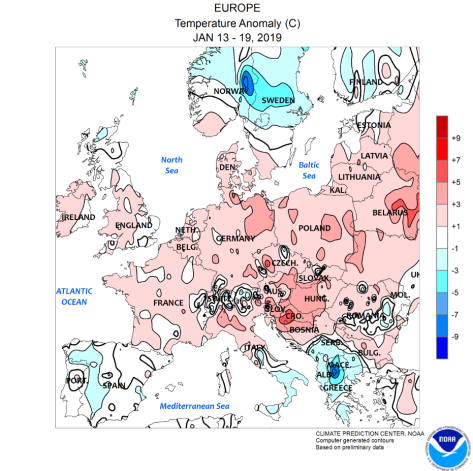










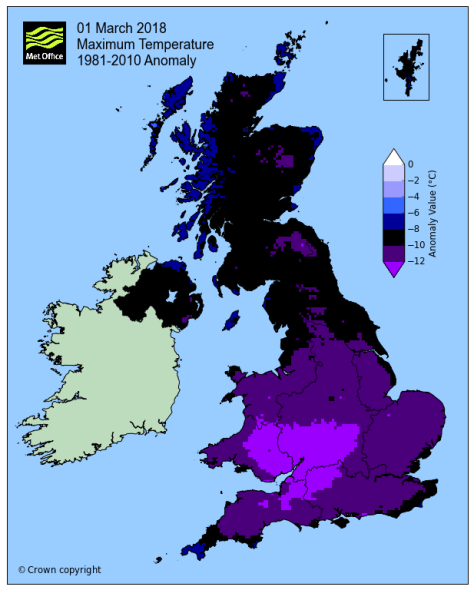



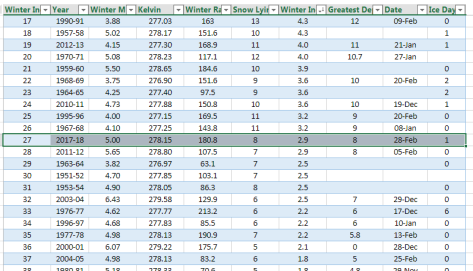












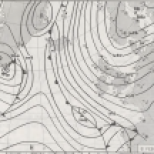





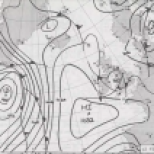













You must be logged in to post a comment.